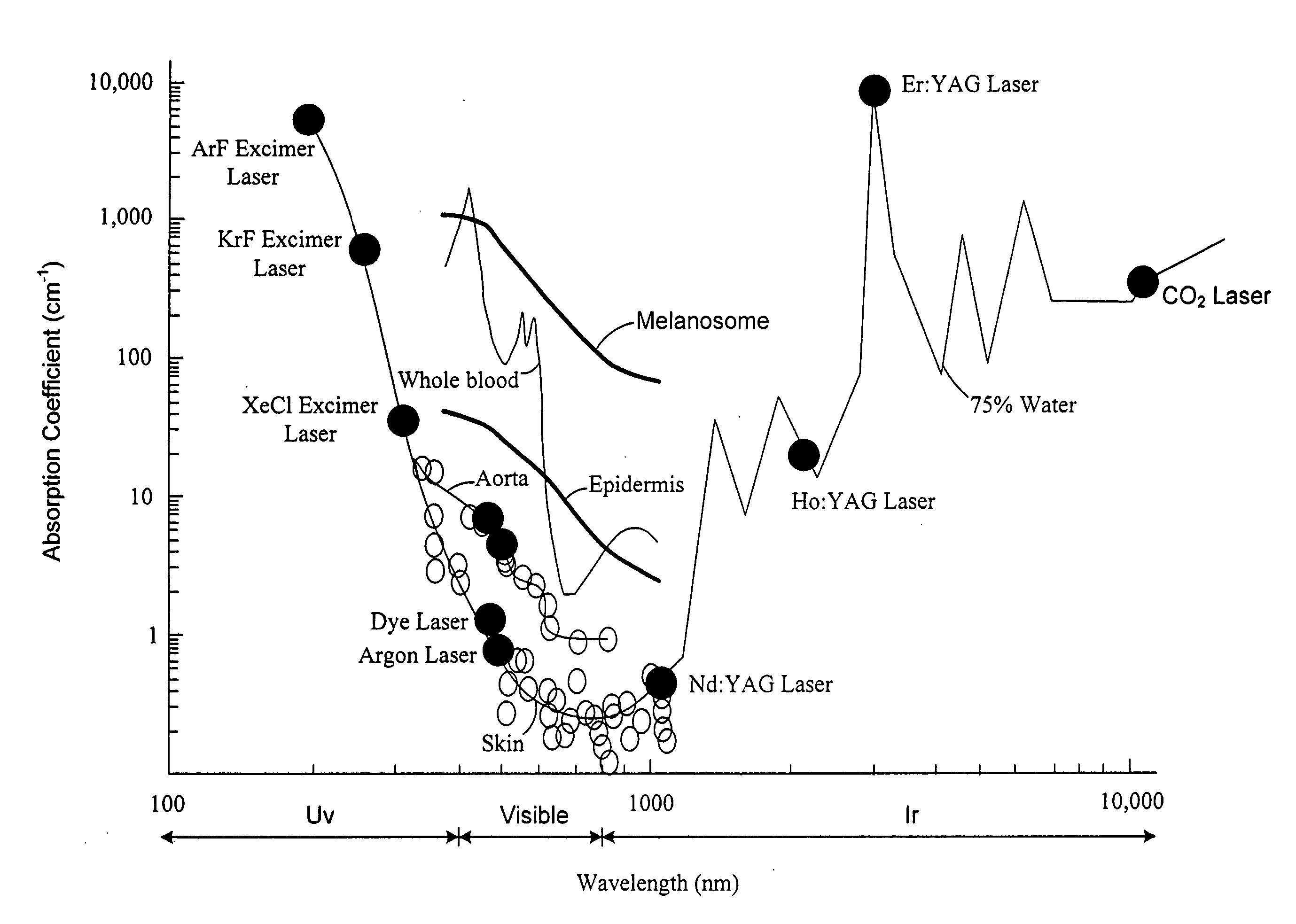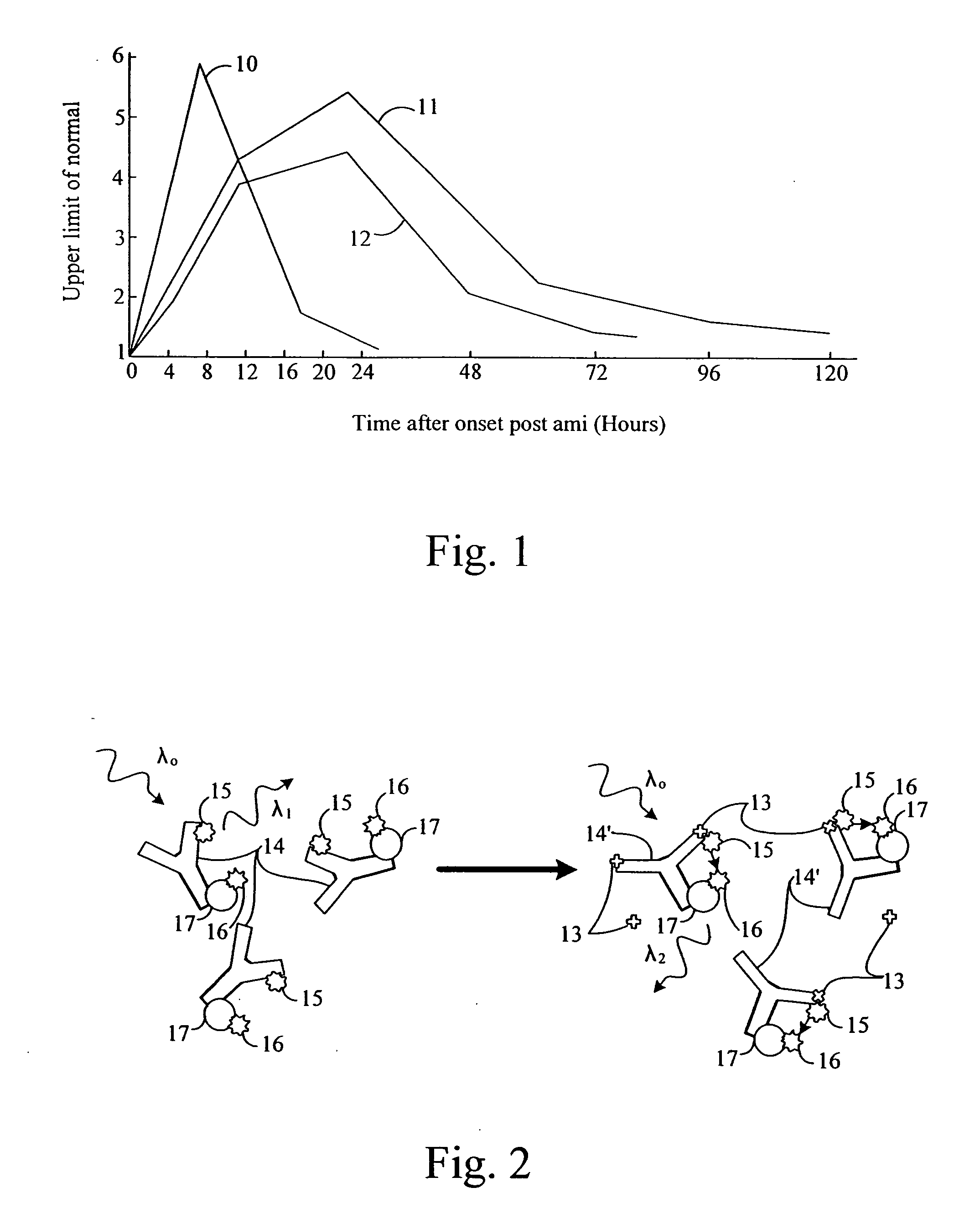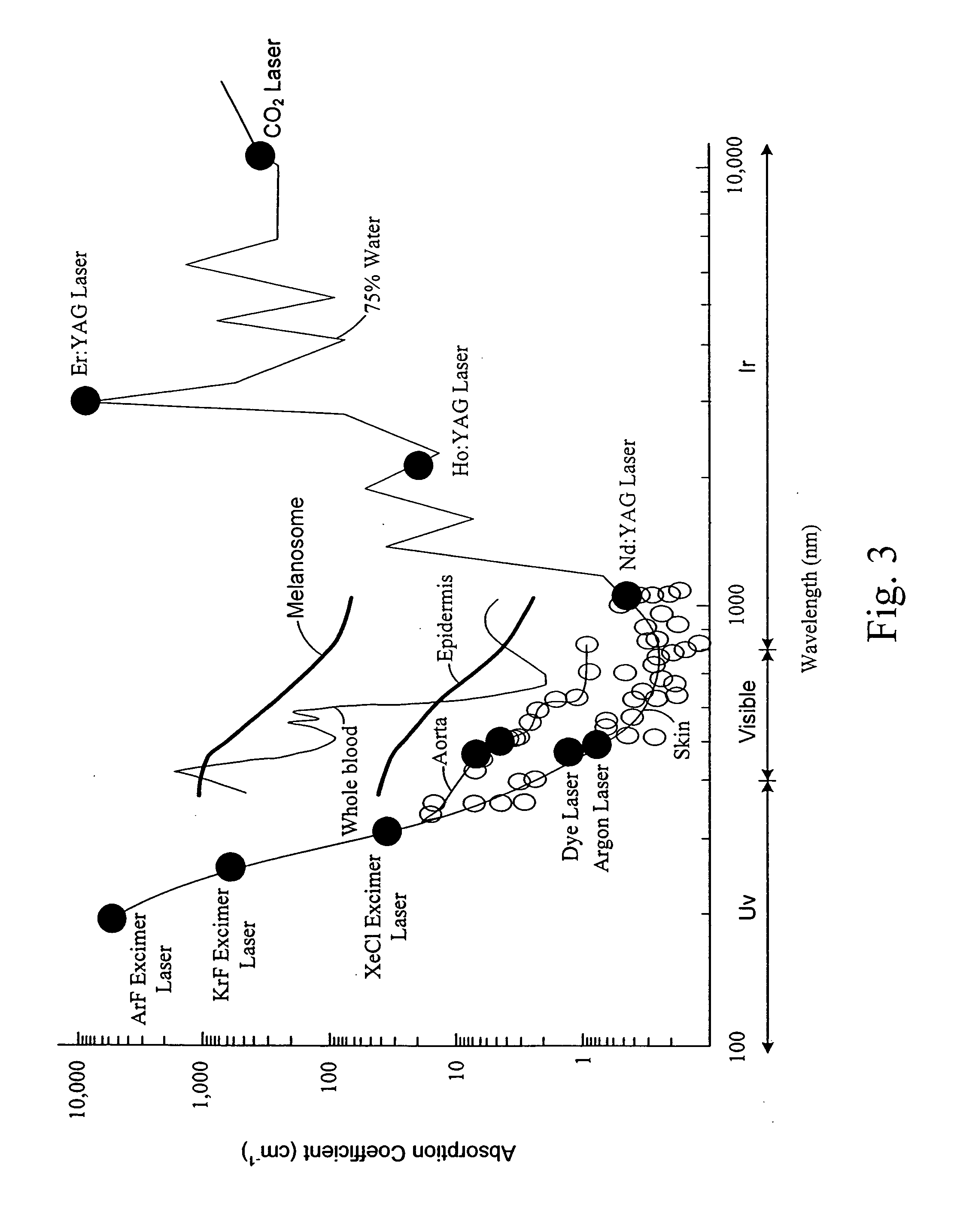Biomarkers sensing
a biomarker and sensing technology, applied in the field of biomarker sensing, can solve the problems of not being observable, adding to the time and attention requirements of such time and attention, and the delays inherent in this process are particularly frustrating
- Summary
- Abstract
- Description
- Claims
- Application Information
AI Technical Summary
Benefits of technology
Problems solved by technology
Method used
Image
Examples
Embodiment Construction
[0038] Rather than the current technique being used for in vivo fluorescent assays for blood proteins described above, the technique of fluorescence resonant energy transfer (FRET) is more suitable for monitoring patient's or subject's blood. The FRET technique has recently been applied to the detection of cardiac troponins in vitro. In this instance the fluorophores (dyes) were conjugated to a troponin I antibody-Protein G complex and a Troponin T antibody Protein A complex, and were allowed to react in solution with a sample containing troponin. All of the reagents used in the assay are available from commercial sources. A change in the fluorescence signal and detection of troponin was demonstrated all without the use of a capture substrate or the need to flush away the unreacted dye conjugated proteins as described below.
[0039]FIG. 2 schematically illustrates the FRET technique in showing the effect of antigens, 13, on antibodies, 14, to an arm of which a dye, 15, or fluorophore...
PUM
| Property | Measurement | Unit |
|---|---|---|
| Frequency | aaaaa | aaaaa |
| Wavelength | aaaaa | aaaaa |
| Distribution | aaaaa | aaaaa |
Abstract
Description
Claims
Application Information
 Login to View More
Login to View More - R&D
- Intellectual Property
- Life Sciences
- Materials
- Tech Scout
- Unparalleled Data Quality
- Higher Quality Content
- 60% Fewer Hallucinations
Browse by: Latest US Patents, China's latest patents, Technical Efficacy Thesaurus, Application Domain, Technology Topic, Popular Technical Reports.
© 2025 PatSnap. All rights reserved.Legal|Privacy policy|Modern Slavery Act Transparency Statement|Sitemap|About US| Contact US: help@patsnap.com



